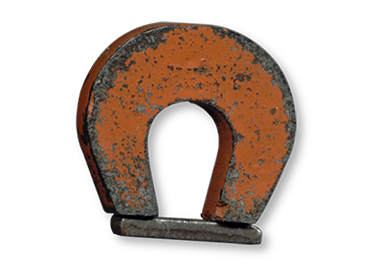Sources of PIM?
 Ferromagnetic materials are the most common materials to avoid and include ferrites, nickel, (including nickel plating) and steels (including some stainless steels). These materials exhibit hysteresis when exposed to reversing magnetic fields, resulting in PIM generation.
Ferromagnetic materials are the most common materials to avoid and include ferrites, nickel, (including nickel plating) and steels (including some stainless steels). These materials exhibit hysteresis when exposed to reversing magnetic fields, resulting in PIM generation.PIM can also be generated in components with manufacturing or workmanship defects, such as cold or cracked solder joints or poorly made mechanical contacts. If these defects are exposed to high RF currents, PIM can be generated. As a result, RF equipment manufacturers perform factory PIM tests on components, to eliminate PIM caused by these design and manufacturing defects.
In the field, PIM can be caused by components that were damaged in transit to the cell site, installation workmanship issues and by external PIM sources. Some of these include:
✪ Contaminated surfaces or contacts due to dirt, dust, moisture or oxidation.
✪ Loose mechanical junctions due to inadequate torque, poor alignment or poorly prepared contact surfaces.
✪ Loose mechanical junctions caused during transportation, shock or vibration.
✪ Metal flakes or shavings inside RF connections.
✪ Inconsistent metal-to-metal contact between RF connector surfaces caused by any of the following: Trapped dielectric materials (adhesives, foam, etc.), cracks or distortions at the end of the outer conductor of coaxial cables, often caused by overtightening the back nut during installation, solid inner conductors distorted in the preparation process, hollow inner conductors excessively enlarged or made oval during the preparation process.
✪ PIM can also occur in connectors, or when conductors made of two galvanically unmatched metals come in contact with each other.
✪ Nearby metallic objects in the direct beam and side lobes of the transmit antenna including rusty bolts, roof flashing, vent pipes, guy wires, etc.
